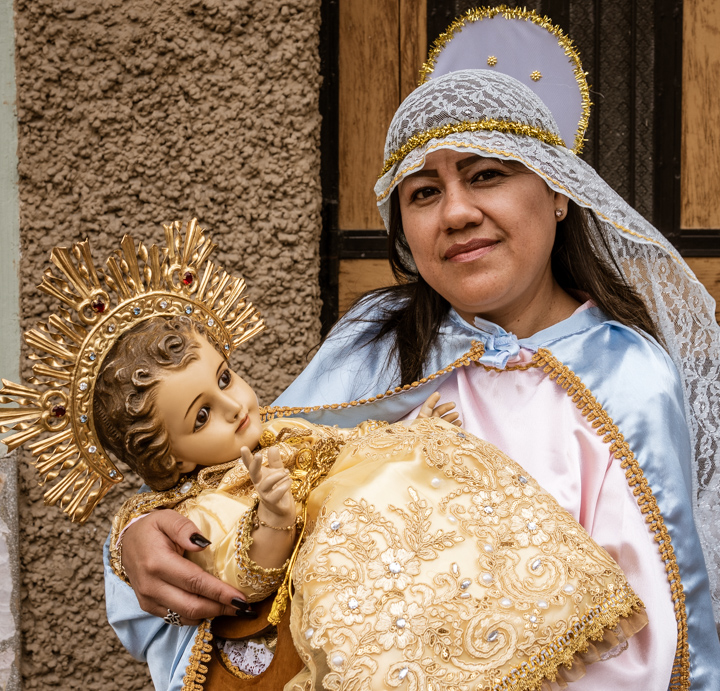
Christmas Eve is always the biggest event of the year for Cuenca. The parade is called “Pase del Nińo Viajero” or “Passage of the Traveling Child.”
This parade has been held every year since the late 19th century. The main guest of honor is a small sculpture of Jesus, that was made in 1823, then taken to Rome to be blessed by Pope John XXIII.
Estimates of the crowd this year, including both paraders and spectators runs as high as 135,000. Given that the population of Cuenca is only 415,000, that is huge turnout, and the city essentially shuts down for the parade every year. Surprisingly this year, we saw many restaurants and small tiendas open for business during the parade. It was tough finding taxis though, as traffic is blocked around the entire el centro.
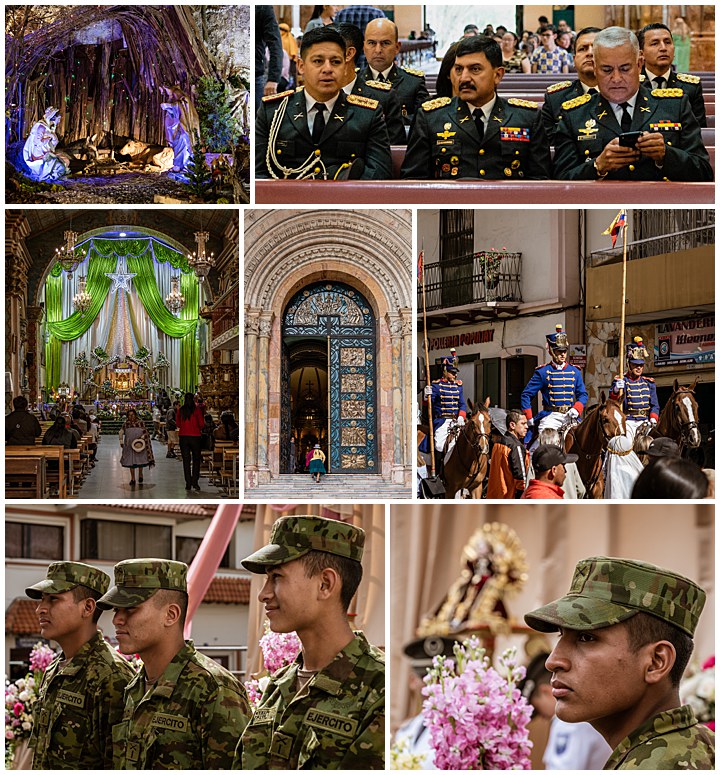
The day starts with official mass at the New Cathedral at Parque Calderón, in the center of town (center for front door). Mass is also held at other churches during the day, such as the Sanctuary Mariano at the flower market a block away (center-left).
The top military officials attend mass in the reserved front rows (upper-right), ready to have the Jesus doll ceremoniously given them to guard as it is taken to its resting place for the day, at the reviewing stand at San Sebastian Plaza. The parade started late this year, as mass finished late, which is fairly common in Ecuador. It was nine hours later before the parade ended.
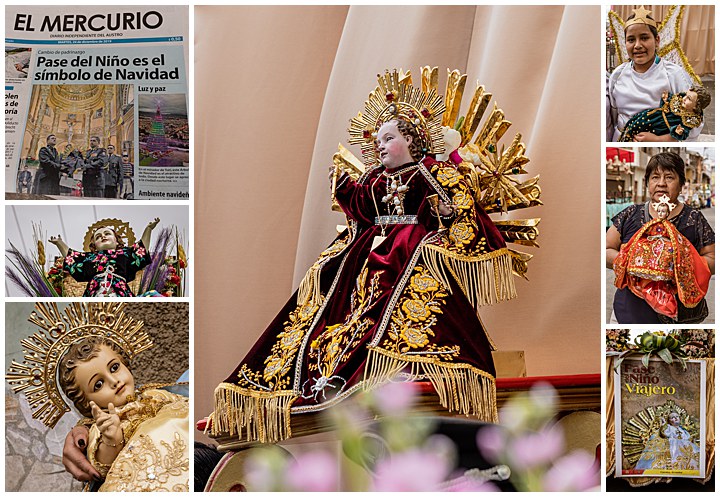
Center above, you can see the official Traveling Jesus doll on the reviewing stand. Every neighborhood participating in the parade, also has a Baby Jesus doll of their own, some of which are shown here.
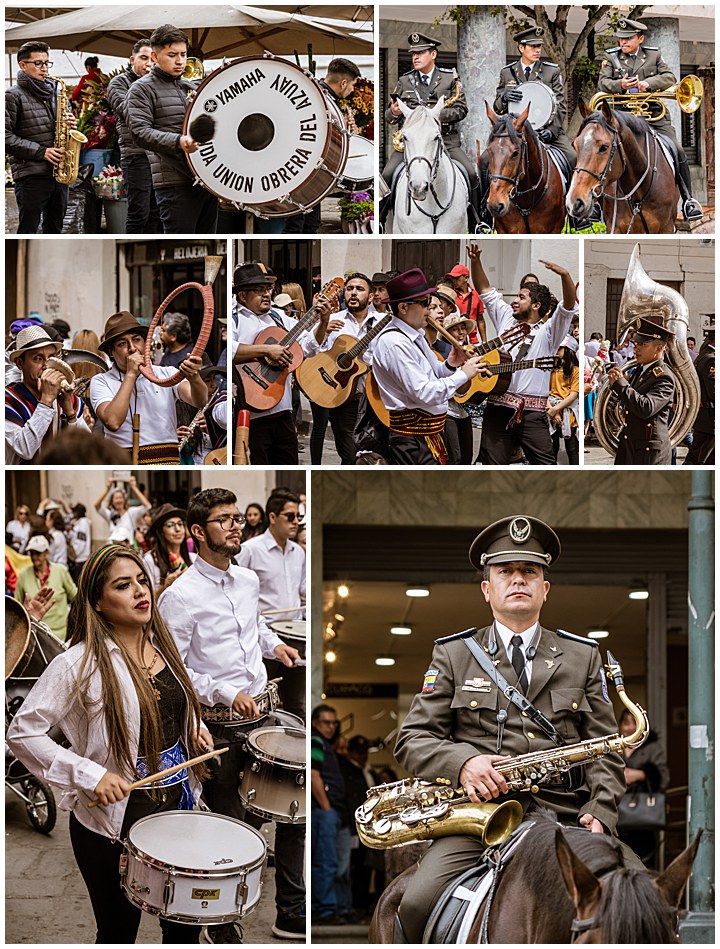
Many neighborhood groups have their own bands performing along the parade route. The military also have their band, some on horseback (right column).
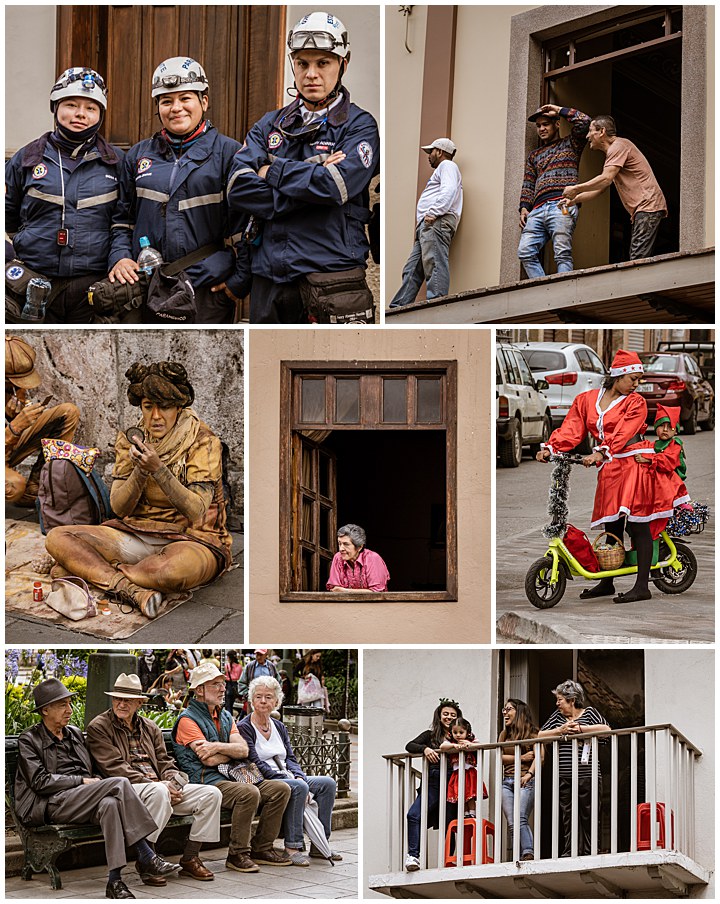
When watching a parade, don’t forget to look up and around at others also watching the parade. They are often a show unto themselves. There are also many support teams, such as the paramedics in upper-left, all along the parade route.
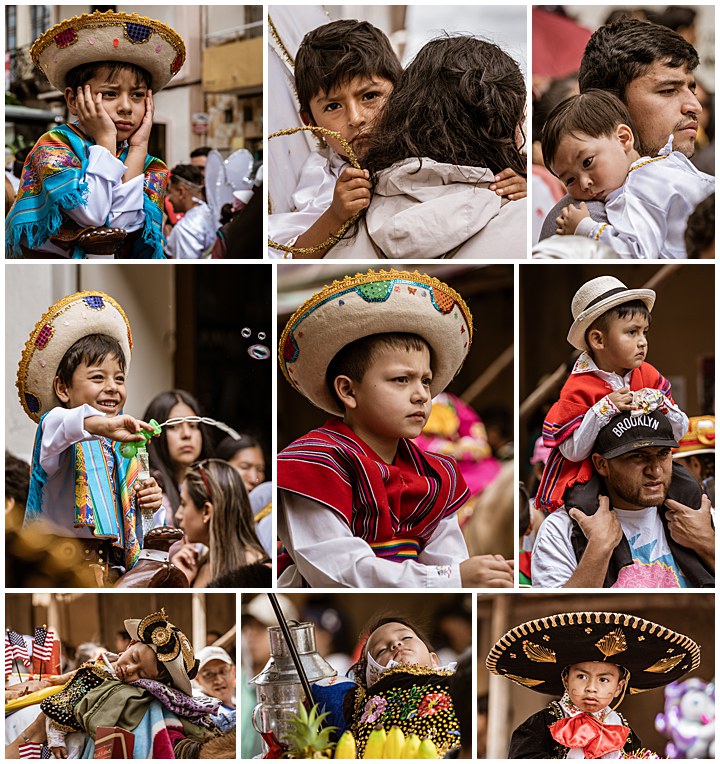
The parade is about the children, so they figure prominently in every portion of the parade. While some of the boys were having fun (center-left), most of the young boys were bored, or sleeping.
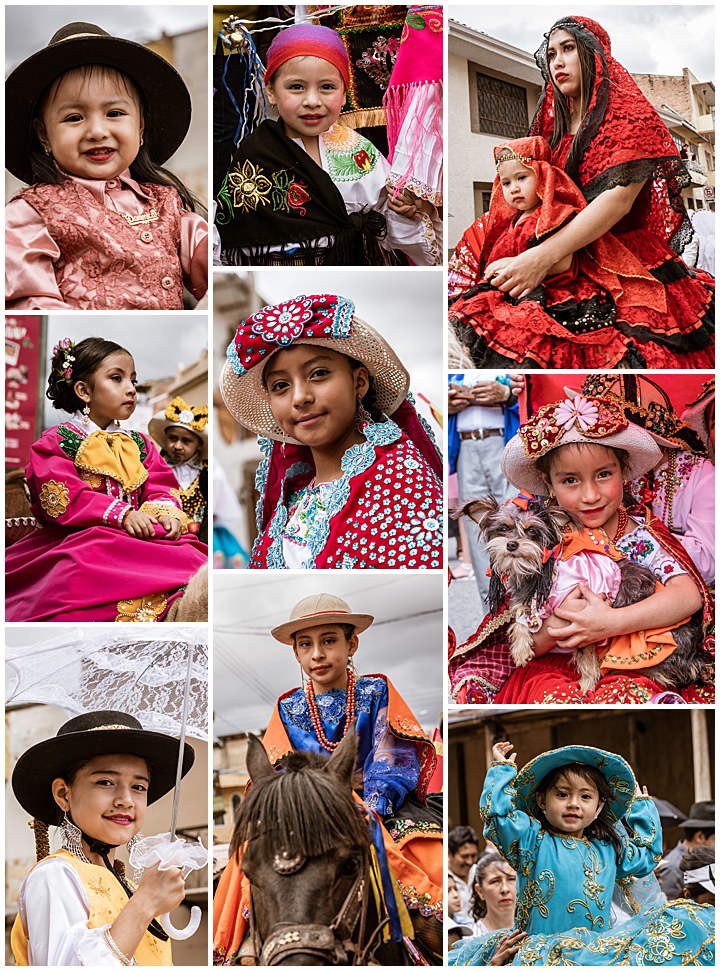
The girls seemed to be more interested, and having fun all day long. Some were on horseback, others on the back of floats, while others were walking or dancing along the parade route. Even at 1:00 pm, many floats were still lined up at the coliseum on 12th de Abril ready to enter the parade.
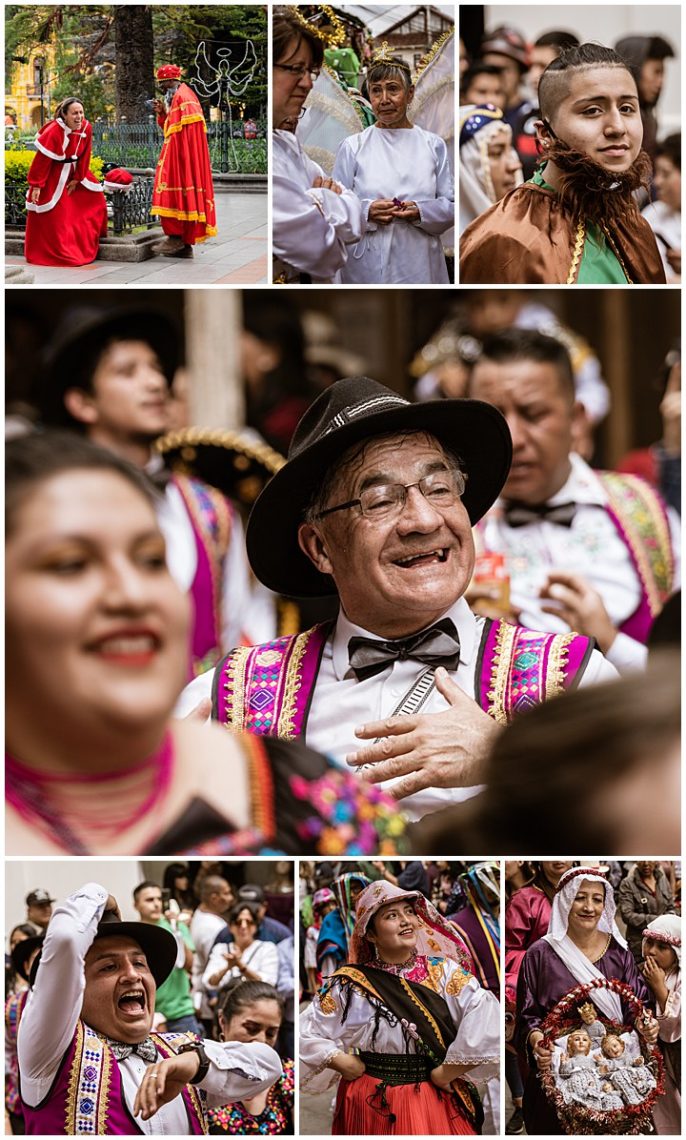
Though the parade centers around the estimated 10,000 children participants, people of all ages join in the parade too. Often they were supporting their children, or carrying Jesus dolls (lower-right). The majority were dancing and singing and appearing to have a grand time. Spectators are still allowed weave in and out of the parade route, so participants merge with the crowds, creating a bonus for photo ops.
This is our 7th Pase del Nińo parade, and there is one gentleman (a retired professor) who has been in every one of those parades, and who generates a lively and fun atmosphere for his entire entourage. He was there again this year, shown above in center image.
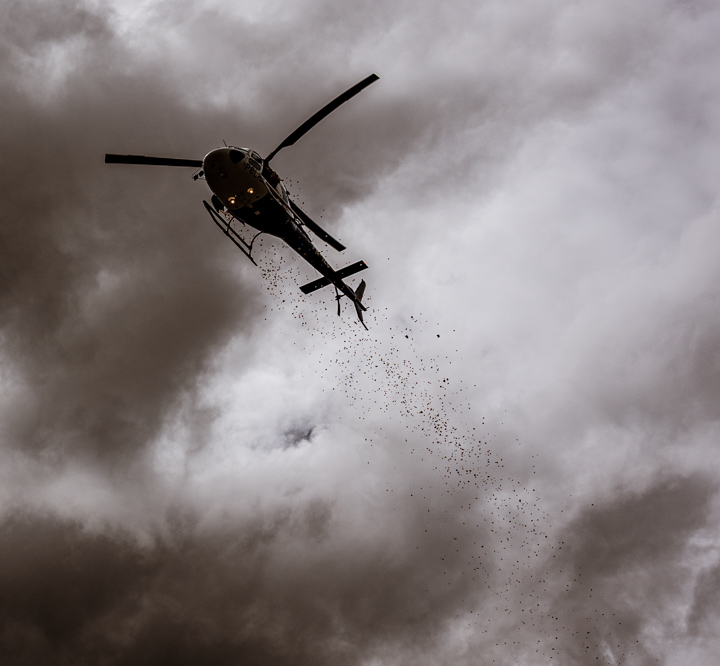
The priest at the official mass asked his congregation to pray for “warm, cloudy weather with no rain,” and was quoted in the newspaper as saying that God had answered his prayers. This is considered ideal weather for parades here in the Andes, since it can get rather hot in the sun if the sky is clear.
At the beginning of the parade, as the official Baby Jesus doll was being placed on the reviewing stand at San Sebastian Plaza, a helicopter flew overhead and dropped rose petals over the crowd, as seen above.
We first read about this in Facebook, and couldn’t believe it, since we had never seen that in past parades. Evelyn asked a city official, and he stated that he had never heard of such an event. This is pretty common in Ecuador though, where details are not well communicated. As Evelyn was taking photos of the reviewing stand, a helicopter flew overhead for two passes, dropping rose petals on the crowd.
After the parade ended, within a half hour, the streets had been thoroughly cleaned by what we have dubbed “The Blue Army” — a group of people dressed head-to-toe in blue coveralls, hired by the city to pick up all litter and keep the city clean. They are amazing in how quickly they can remove all evidence that 135,000 people were celebrating in that location, less than an hour earlier.
